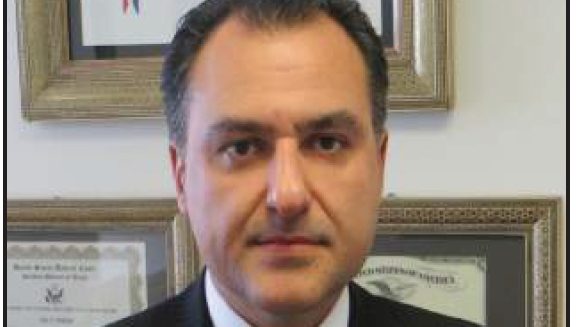Is Using Public Roads Consent to Be Blood Tested
By driving on public roads, are you giving implicit consent to law enforcement to test your blood for a high alcohol concentration? This is the question that was presented to the Supreme Court this year. The U.S. Supreme Court recently upheld a Wisconsin law that allows police to test the blood of unconscious drunk-driving suspects. About 28 states have similar laws to Wisconsin’s. Therefore, this Supreme Court decision has a widespread impact on other states as well. The U.S. Court, after careful deliberation, in a 5-4 vote, decided that motorists can have their blood drawn and tested without giving explicit consent or even being conscious, if they are driving on public roads and are suspected of being intoxicated. This decision was a controversial one amongst the justices. The reasoning is outlined below.
This issue of blood testing drunk driving suspects without their explicit consent came to the Supreme Court from the case of Gerald Mitchell. Six years ago, Wisconsin police received a call notifying them that the caller had just seen a man, Gerald Mitchell, stumble into a gray minivan and drive away. The police responded to this call and found Gerald Mitchell, who was not fully clothed, on a lake, slurring his words, and showing obvious signs of intoxication. Knowing that he had just driven a vehicle and that he was showing visible signs of extreme intoxication, police arrested Mitchell. After arresting him and after administering a preliminary breath test, they determined that his blood-alcohol level was substantially higher than the legal limit, about three times higher. The preliminary breath test was not admissible in court so the police had to administer another test to determine Mitchell’s blood-alcohol concentration. However, by the time the police wanted to do a second breath test to determine his intoxication level, Mitchell had already been knocked unconscious from the alcohol and was unable to comply. At this point, police had two options. They could either draw his blood for a blood-alcohol test which would verify that he was intoxicated, and they would be able to move forward with charging him (a fact they already were sure of), or they could do nothing, wait for him to sober up enough to regain consciousness, and lose the ability to test him and charge him. Being presented with these options, police and hospital staff decided to draw his blood, anyway, while he was unconscious. Through this blood-alcohol level test, they were able to determine that his blood-alcohol level was 0.222, significantly higher than the legal limit. In light of this new blood-alcohol test, Mitchell was charged with driving while intoxicated. The question presented to the court through this case was whether driving on Wisconsin public roads gave implied consent to law enforcement to draw the blood of a person suspected of driving while intoxicated.
The Fourth Amendment of the U.S. Constitution generally requires police to obtain a warrant in order to draw blood for testing purposes. Historically, drawing blood has been considered an intrusion of bodily privacy under the United States Constitution. There are numerous cases where the Supreme Court has heard similar cases and decided against allowing blood testing without consent or at least consciousness. For example, in 2013, the Supreme Court ruled that police violated the Constitution for drawing blood without a warrant in a routine DUI case under the Fourth Amendment. In the most recent decision, the Supreme Court had to revisit an issue they had seen before but with newer justices. They were tasked to decide whether driving on public roads in and of itself was implied consent to have one’s blood drawn. Instead, after deliberation, they decided on the issue of whether drawing blood in a DUI case would fall into the exigent circumstance exception of the Fourth Amendment.
Unlike the previous Supreme Court decision, the current Supreme Court decided that if someone is driving on a public road and appears to be intoxicated, law enforcement can draw their blood because of the exigent circumstance exception of the Fourth Amendment. In previous decisions, the Supreme Court decided that nonconsensual blood testing without a warrant in routine DUI cases is a bodily intrusion in a person’s privacy. In these decisions, the justices have said that there are less intrusive ways of checking for the blood-alcohol level of a person suspected of driving under the influence of alcohol. Drawing someone’s blood is a very invasive route and their consent was required in previous Supreme Court decisions. The most recent decision is conflicting with previous decisions primarily on the issue of what kind of emergencies should allow for exigent exceptions to Fourth Amendment protections.
In this recent Supreme Court decision, Justice Roberts, Breyer, Kavanaugh, and Alito laid out their reasoning for upholding the Wisconsin law on an exigent exception basis rather than on an implied consent basis. Their reasoning largely consisted of the fact that the Fourth Amendment generally requires a warrant for a search; however, there is an exception to this rule. This exception is for “exigent circumstances.” This exception to the Fourth Amendment allows searches without a warrant to “prevent the imminent destruction of evidence.”
The next question is whether or not immediately testing the blood of a suspected drunk driver will lead to the imminent destruction of evidence. In the case of someone who is suspected to be driving while intoxicated, their blood-alcohol levels need to be tested before the alcohol leaves their system. Therefore, waiting too long could cause the evidence to be “destroyed” or no longer present. Justice Thomas agreed with Alito, saying that because alcohol disappears from the body fairly quickly, police should be able to perform a blood test whenever they suspect someone of drunk driving, whether they are conscious or not. This means that the warrant would not be necessary and blood-alcohol tests would be allowed in all drunk driving cases. His opinion was that intoxicated and unconscious drivers are very dangerous and that making police chase down a warrant to do a simple blood-alcohol test would definitely take away from their other pressing duties. This would be especially true if this were to be the case around a crash/ accident site. The Supreme Court upheld the Wisconsin law on these grounds.
Justice Sonia Sotomayor dissented, however. In her opinion, she wrote that the police should not have to choose between getting a warrant and dealing with problems created by drunk drivers. She argued that if there is time, law enforcement should be required to get a warrant before performing a blood test in order to avoid jeopardizing a citizen’s basic constitutional rights.
Justice Neil Gorsuch also dissented, although he dissented on different and more textual grounds. He argued that in his opinion, the justices had granted Supreme Court review to decide whether “Wisconsin drivers impliedly consent to blood alcohol tests thanks to state statute”. However, the Supreme Court did not answer this in their decision. The Supreme Court’s opinion did not really touch on implied consent at all, although it was the issue that was supposed to be deliberated. Instead, the majority of the justices decided on whether the law would fit into an exigent exception of the Fourth Amendment. Justice Gorsuch said in his dissent that he would have dismissed the case without deciding on it. He further went on to say that he would have waited for another case where the exigent circumstance was more of a pressing issue.
In conclusion, the Supreme Court upheld Wisconsin’s law allowing police to test the blood-alcohol concentration of a suspected intoxicated driver without their consent in order to effectively and timely charge said driver. This issue has previously been presented to the Supreme Court on multiple occasions and each of those times, they have made an opposite ruling. However, this time, the current Court has decided differently. While the issue presented to the Court asked whether driving on public roads gives law enforcement implied consent to test suspected drunk drivers’ blood, the Supreme Court decided on a different standard, whether it is an exigent circumstance exception to the Fourth Amendment. Justices Alito, Thomas, Breyer, Kavanaugh and Roberts joined in on the majority vote. The remaining four justices delivered dissenting opinions. The majority of justices decided that since the suspected drunk drivers are considered a real danger and threat to our society and not testing their blood-alcohol concentration immediately would lead to losing evidence, blood-alcohol testing can be done without a warrant pursuant to the Fourth Amendment. Because of the arguments above, they decided testing suspected drunk drivers without their full participation and explicit consent was, in fact, an exigent exception. Therefore, no warrant is necessary because obtaining a warrant would delay the process and thereby increase the possibility that the blood-alcohol evidence needed to charge said suspects, could be lost.



 نیازمندیها
نیازمندیها





















